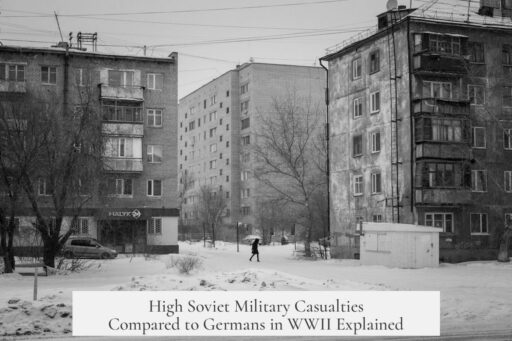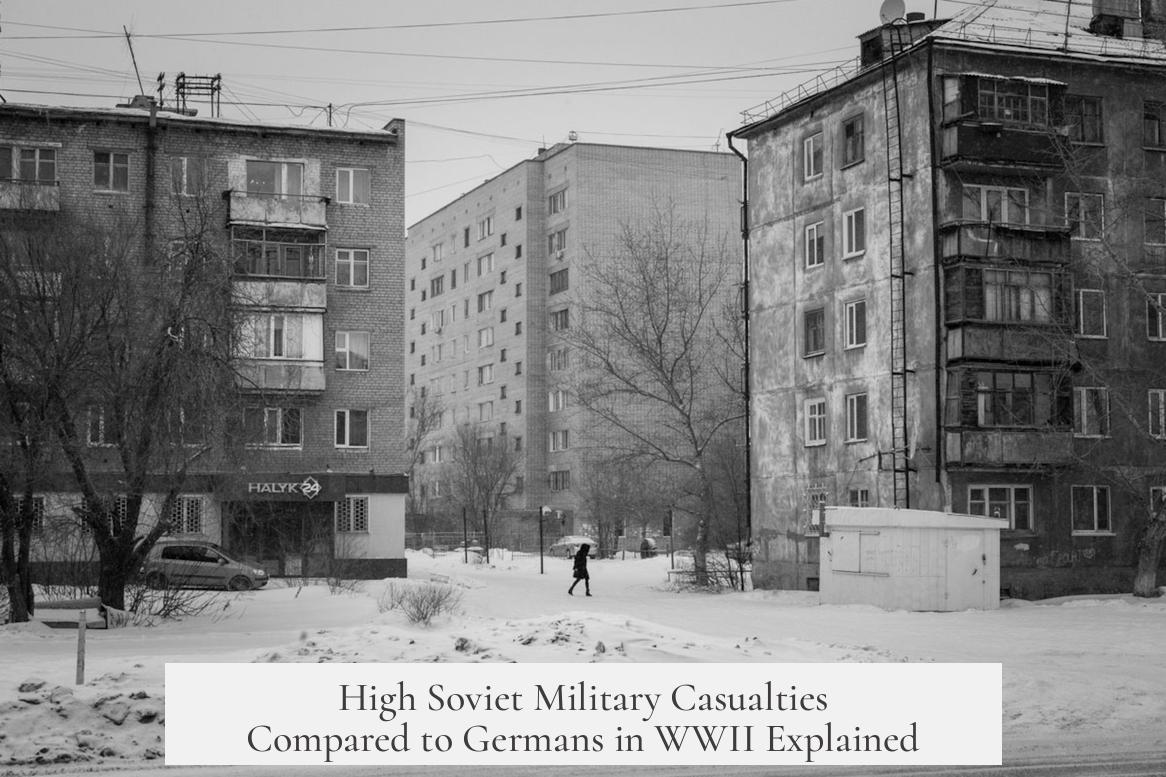Soviet military casualties during World War II were significantly higher than those of the Germans primarily due to the initial stages of Operation Barbarossa in 1941, where the Soviets suffered massive losses from surprise attacks and unprepared defenses. This early period accounts for the vast majority of the disparity in casualties.
The difference in casualties between the Soviets and Germans during the war largely stems from the catastrophic initial 1941 campaign. The Soviet forces faced three million more casualties than the Germans in that year alone. From 1942 onward, casualty numbers became more balanced, with neither side experiencing overwhelming losses relative to the other.
The natural starting point is Operation Barbarossa, launched by Germany in June 1941. The Wehrmacht, Germany’s armed forces, relied heavily on tactical maneuvers rather than long-term strategic planning. Their approach assumed a rapid and overwhelming victory, which initially succeeded in overrunning Soviet defenses. This overconfidence shaped the conduct of the invasion and led to significant Soviets losses at the outset.
At the time of the invasion, the Soviet Union was poorly prepared. Defensive lines had just been readjusted under Joseph Stalin’s orders, weakening overall readiness. Soviet military organization was incomplete, and the country’s militaro-industrial capacity was not fully mobilized for war. Moreover, German forces executed an unexpected and effective night-bombing campaign that crushed the Soviet first line of defense, adding to the chaos.
On top of Soviet unpreparedness, Germany held a numerical advantage early in the war. The Wehrmacht maintained minor commitments on their borders, leaving them free to concentrate forces on the Eastern Front. This allowed German troops to deploy in superior numbers during crucial battles.
Contrary to some assumptions, the quality of Soviet forces was not vastly inferior to the Germans. However, the Soviets did not position their best units on the front lines initially. This deployment strategy meant that many less experienced or equipped troops faced the brunt of the German assault at first. Meanwhile, German forces spearheaded deep advances into Soviet territory until their momentum was checked.
Geography and logistics also added challenges for the Soviets. The vast and often difficult Soviet terrain limited how far they could spread their troops while still maintaining supply lines, especially when enemy pockets remained behind their front lines. Managing long-distance troop movements and sustaining operations over such expanses further strained Soviet capacities.
When the Soviets launched large-scale counteroffensives from 1942 forward, the war dynamics shifted. The Soviets became more confident, understanding that the tide had turned. They had strategic reasons to press their advantage, such as controlling Central Europe before the Western Allies. German forces transitioned more into defensive posture but retained the ability to conduct local counterattacks, slowing Soviet advances. This period saw casualty ratios between the Soviets and Germans somewhat level out.
Certain key engagements influenced perceptions of high Soviet casualties. The Battle of Kiev in 1941 ended in a large Soviet surrender, contributing to the narrative of a disastrous defeat despite strategic circumstances that partly justified the retreat. Similarly, early stages of the Battle of Stalingrad involved severe Soviet losses, although the overall battle eventually favored the Soviets.
Throughout the war, some German generals privately expressed doubts about eventual victory, highlighting the war’s attritional nature. The Soviets, except for their initial defensive line, managed to hold ground and delay the German timetable, despite early setbacks.
| Factor | Description |
|---|---|
| Operation Barbarossa (1941) | Massive Soviet losses from surprise German invasion; main cause of casualty discrepancy. |
| Wehrmacht Strategy | Tactical focus assuming quick frontal victory, allowing early German advances. |
| Soviet Unpreparedness | Defensive lines restructured, partial military organization, poor industrial mobilization. |
| Numerical Advantage to Germany | Concentration of forces with freedom from other fronts, enabling greater initial force. |
| Soviet Unit Deployment | Best units held back; frontline units were often weaker initially. |
| Geography and Logistics | Vast terrain limited deployment and supply chain while surrounded by enemy pockets. |
| Soviet Counteroffensives | Shifts in battlefield dynamics evened casualty ratios post-1941. |
| Notable Battles | Early defeats and surrenders (e.g., Kiev, early Stalingrad) shaped casualty perceptions. |
- The massive Soviet casualties are mostly tied to the early phase of the German invasion in 1941.
- German tactical assumptions and numerical advantages enabled swift and devastating initial attacks.
- Soviet forces were unprepared and partially reorganized, compounding their losses.
- Geographical challenges constrained Soviet maneuvering and logistics during critical battles.
- Subsequent Soviet counteroffensives balanced casualty ratios, reflecting changing war dynamics.
- Specific battles influenced perceptions but did not fundamentally alter overall casualty trends.
Why Were Soviet Military Casualties So High Relative to the Germans in WWII?
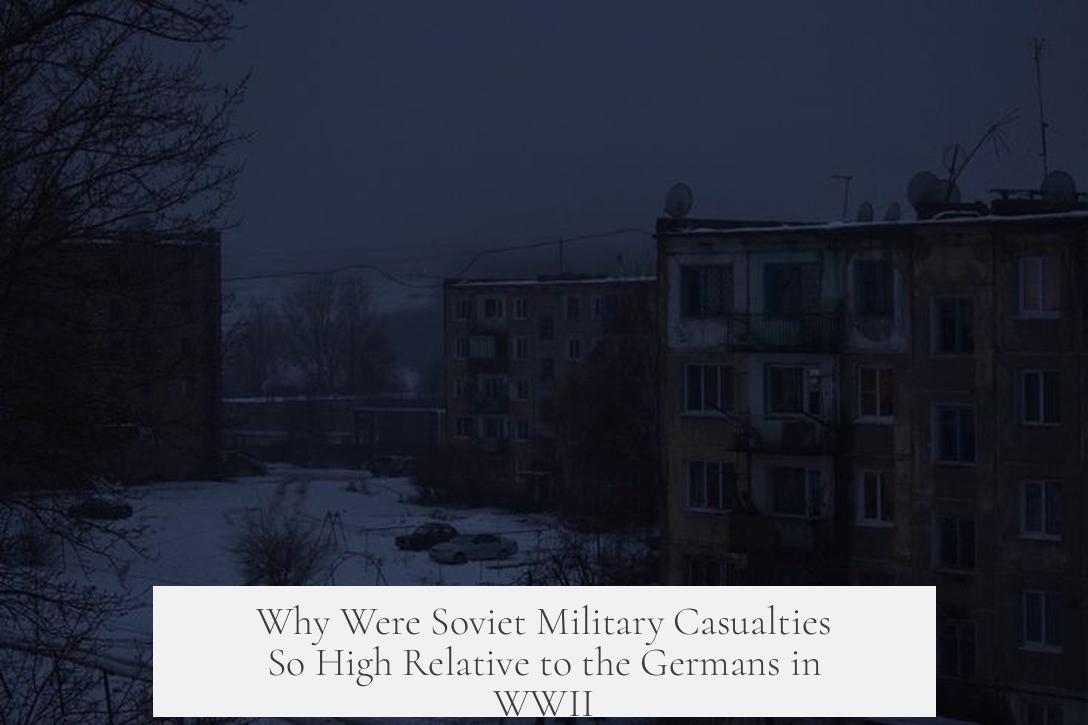
The staggering difference in Soviet military casualties compared to Germany in the Second World War boils down mainly to the disastrous opening phase of Operation Barbarossa in 1941. The Soviets suffered immense losses early on, about 3 million more than the Germans in that campaign alone.
So, what exactly happened? Let’s unpack this story of surprise, strategy, geography, and grit.
Operation Barbarossa was the game changer. The 1941 campaign saw the most brutal and sudden blows dealt to the Red Army. The difference between Soviet and German casualties is nearly all about that year. After 1941, the casualty numbers start to balance out more, though the Soviet losses remain high throughout. It’s kind of like a terrible opening act that sets the entire show for tragedy.
The Germans launched a massive surprise attack, catching the Soviets totally unprepared. Stalin had recently reshaped the first line of Soviet defenses. It was like moving the chess pieces just before the opponent attacked—and then ignoring the warning signs that a big move was coming.
Surprise! A Night-Bombing Blitzkrieg
The Wehrmacht’s tactical approach leaned on overwhelming, fast strikes aiming at chaos before the Soviet forces could organize. This wasn’t just a punch; it was a sucker punch in the dead of night, combined with effective night-bombing operations. Imagine waking up to find your front door kicked down in the dark. Not fun.
The Soviets were also painfully midway through preparing their war machine. Their military-industrial complex was not fully geared for a massive war effort. Suddenly pushed on the defensive, their organization lagged behind the blitzing Germans who enjoyed both numerical superiority and fewer commitments on their borders. Germany could focus nearly all its power on the Eastern front for a good stretch, making its initial strikes far more lethal.
Numbers and Strategy: The Germans’ Winning Formula at First
Contrary to some beliefs, Germany held numerical advantage at the start of Barbarossa. They had forces freed up, thanks to “minor commitments” or few conflicts elsewhere. This gave the Wehrmacht the freedom to concentrate forces effectively. However, while their tactics excelled at quick domination, their broader strategy was overly optimistic. They assumed a rapid collapse of Soviet resistance that just didn’t happen.
It’s worth noting the German army, despite being tactically brilliant, depended heavily on breaking the enemy’s initial line early. Once they hit the thicker Soviet lines, progress slowed.
The Soviet Front Line: Quality Units Out of Position
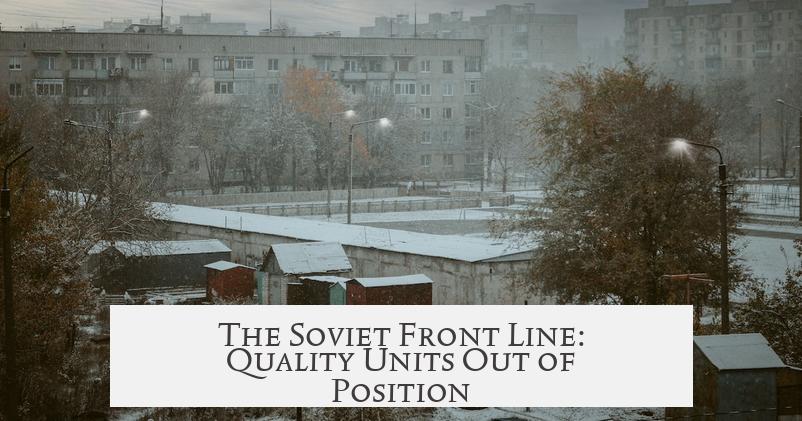
Contrary to popular opinion, the quality gap between Soviet and German units wasn’t as dramatic as often believed. However, the Soviets did not deploy their best troops on the first line of defense. Soviets’ elite units were often held back or positioned deeper to counterattack, leaving less experienced troops to absorb the brunt of the German blitz.
This decision meant that while German spearheads carved deep into Soviet territory, they sometimes faced better-trained troops after the initial thrust, which slowed their progress and led to heavy German casualties later in the war.
Geography as a Double-Edged Sword
The vastness of Soviet territory is legendary. It played a huge role in wartime logistics and troop movements but also posed difficulties.
When enemy pockets survived behind Soviet lines, it limited how far and how widely they could spread forces forward. Supplying troops over enormous distances became a nightmare; it wasn’t like France, where shorter distances and better infrastructure aided maneuvering.
This geographical challenge made it harder for the Soviets to coordinate defenses and counterattacks, often forcing repeated risky engagements that added to casualties.
The Tide Turns: Soviet Counteroffensives
From 1942 onwards, the dynamics shift. The Soviets launch massive counteroffensives. The Red Army isn’t just surviving; it’s pushing back hard. Casualty ratios begin to even out as fighting becomes more balanced and the Germans prepare for defensive warfare.
Pushed by strategic incentives — like the scramble for Central Europe — the Soviets press their advantage relentlessly. The Germans use local counterattacks to hold lines but cannot stop the overall trend of Soviet gains.
Still, even with these counteroffensives, the early damage inflicted during Barbarossa left deep scars in Soviet forces that affected the entire war.
Notable Battles and Perceptions
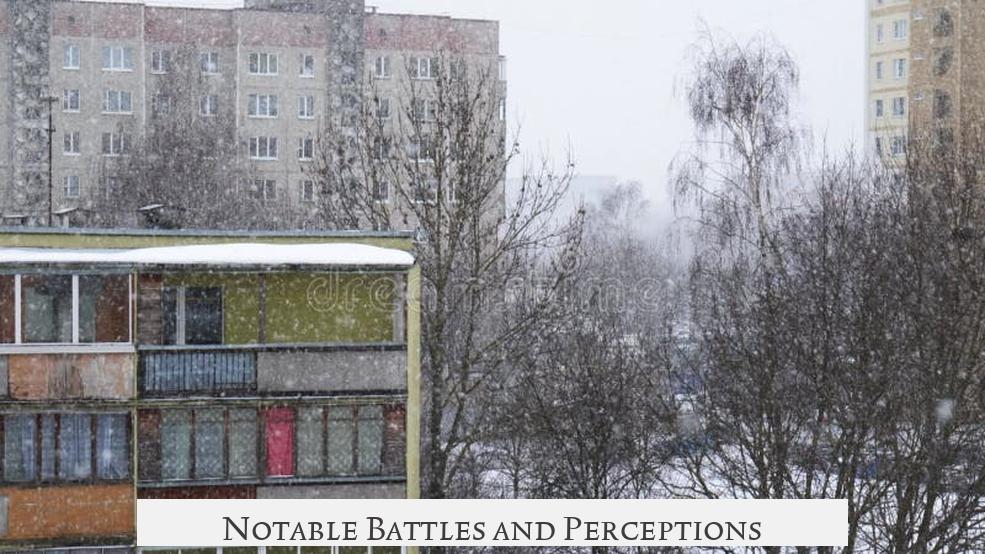
Specific engagements also shaped casualty narratives. Take the Battle of Kiev: a symbolic Soviet surrender in the later stage colors perceptions. It looks like a crushing defeat, but a planned retreat might have saved many lives. Yet Kiev delayed Nazi objectives, showing Soviet actions were more complex than simple loss.
Or consider Stalingrad’s first stages, where Soviet losses were heavy, but over time they turned the tide. It’s these complex battles that hint at why perceptions of Soviet casualties are high: they suffered terrible early losses but adapted and fought back fiercely.
A Few More Notes from the Trenches
Behind the scenes, some German generals quietly doubted victory by mid-war. The Soviets, though overwhelmed early, managed to hold firm enough beyond the front lines to disrupt the timing of Barbarossa’s ultimate success.
One interesting detail: about 200,000 German troops in Army Group Courland later became trapped and effectively “casualties” to the Soviets in a broader sense. These nuances show the complexity behind raw casualty numbers.
Summary: Why the Gap?
In the end, the huge Soviet casualty gap rests mainly on a massive early shock during Barbarossa—a surprise attack against an unready Soviet front. Germany’s initial numerical superiority and fast, tactical strikes devastated the first wave of Soviet forces. However, the Soviets’ massive geography, internal organization, and refusal to completely collapse let them regroup and push back hard. This resilience led to more balanced casualty figures later but could never erase the staggering losses suffered right at the start.
Have you ever thought about how a surprise attack combined with geography and strategic decisions can tilt the scales of war so drastically? The story of Soviet casualties in WWII is a vivid lesson in how preparation (or the lack thereof) and the fog of war shape history.
